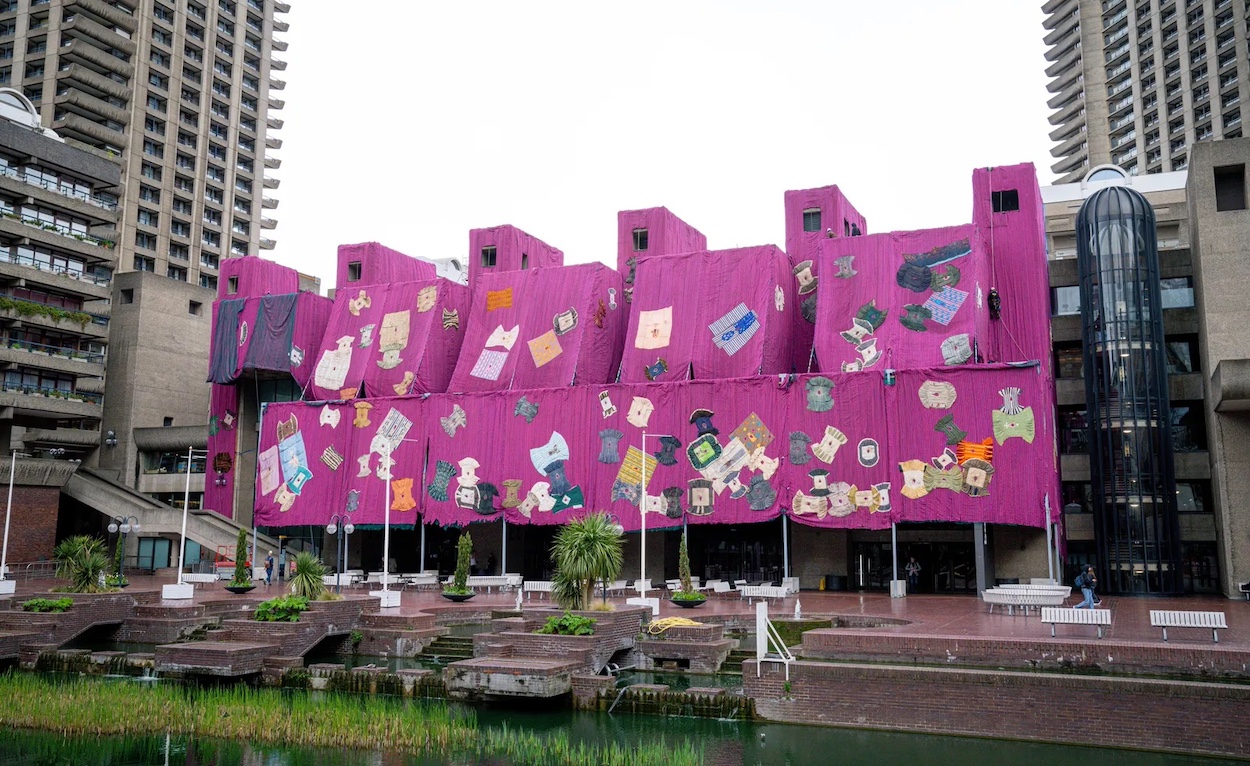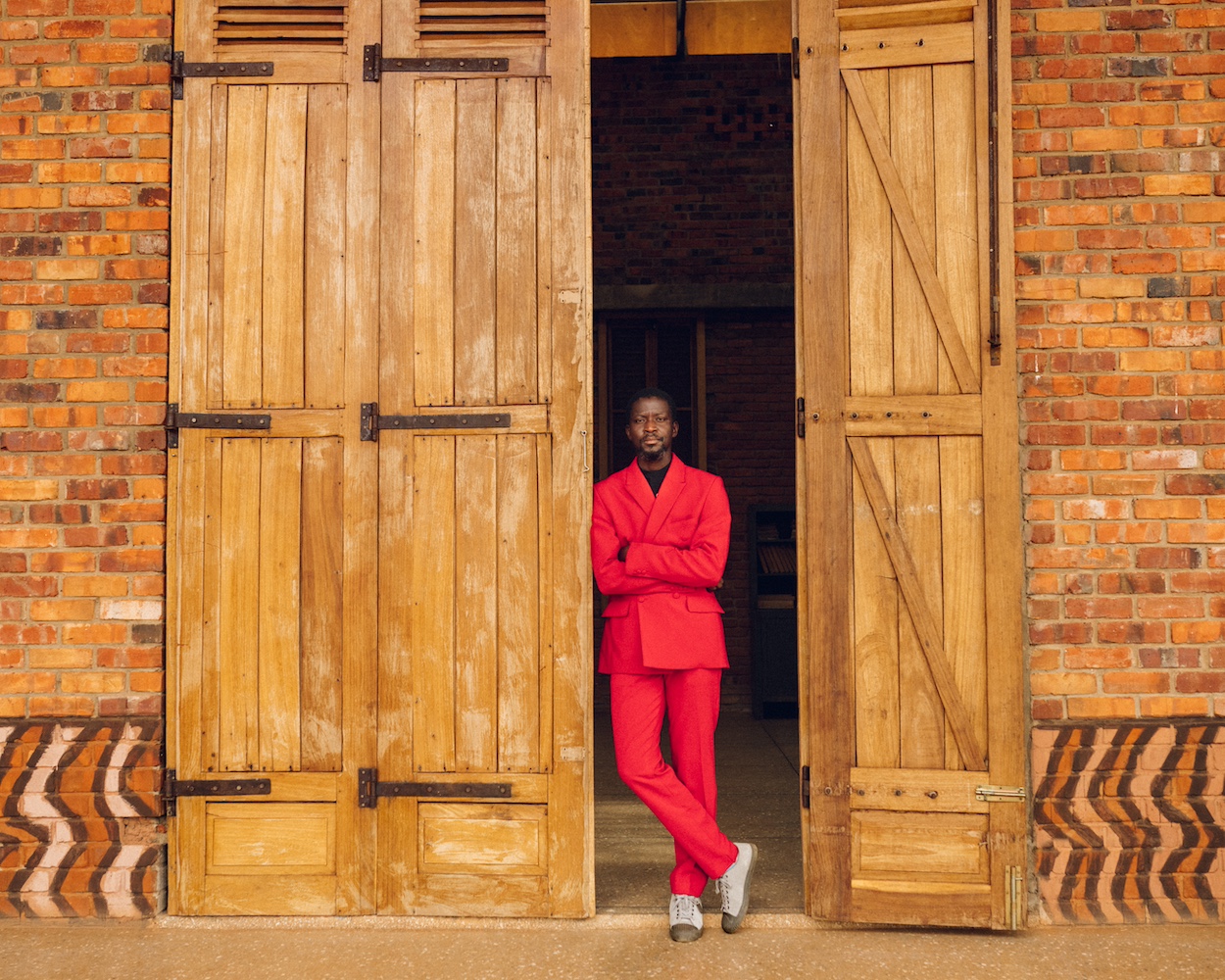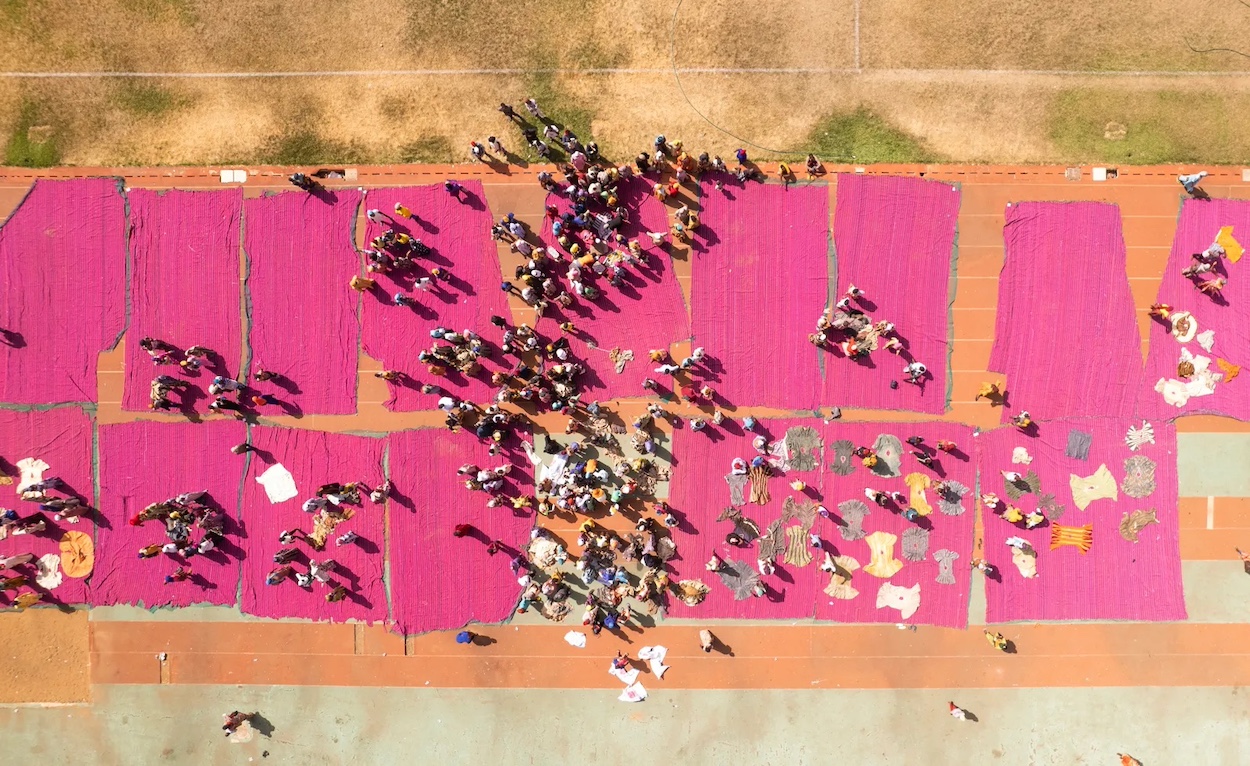The concrete gray facade of London’s Barbican Centre is getting a facelift—at least temporarily. Earlier this week, the museum was sheathed in a lustrous magenta fabric that recasts the Brutalist building as a billowing pavilion embroidered with garments that seem to tumble down its side. The textile transformation, titled Purple Hibiscus after Chimamanda Ngozi Adichie’s 2003 novel about post-colonial Nigeria, is the work of Ghanaian artist Ibrahim Mahama, who has gained renown for enveloping buildings in stitched jute sacks. But unlike Christo and Jeanne-Claude, the late duo known for similar surrealist stunts, Mahama instead seeks to spark reflection about the human labor and trade inequities his materials embody.
Stitched within the pink jute fabric in a cascading formation are a bunch of batakaris, traditional Ghanaian robes often passed down over generations. Considering that some people liken batakaris to DNA, persuading people to forgo the smocks was no easy task. “Some of them will have to pee on it first because they believe pee or human excrement is a way of desacralizing the material,” Mahama told The Guardian. From large and boxy to dainty and frilly, the garments were woven in by 1,000 seamstresses across the material’s 21,528 square feet, which Mahama sourced in bright pink to contrast with London’s gloomy skies.
“It’s like doing plastic surgery, but this time you require a soul that dwells within the body, which is immaterial to build on the physical material,” Mahama says. “Collecting the individual smocks from communities can be quite challenging, but also opens up a portal of new formal aesthetics. The scale of the material forms needed some level of freedom, which the space gifted.” The project’s enormous size meant much of the work needed to take place outside at a sports stadium in Tamale, the northern Ghanaian city and Mahama’s hometown, where he helped build three cultural hubs: the Savannah Centre for Contemporary Art, Red Clay Studio, and Nkrumah Volini.
Mahama, a Venice Biennale alum and inaugural recipient of the Sam Gilliam Foundation and Dia Art Foundation’s Sam Gilliam Award, has focused his practice on investing in Tamale’s creative sector. Purple Hibiscus is no different—when it wraps in mid-August, the material will return to Ghana for installations around the country. For now, the intervention offers a lesson in British history. The Barbican stands on a former hub for the rag trade in London’s Cripplegate ward, which was flattened during World War II. The installation also arrives amid controversy: it’s part of the Barbican’s textiles exhibition “Unravel,” which saw multiple artists withdraw after the museum canceled plans to host a speech on the Israel-Gaza conflict. Mahama insisted it proceed as planned. “So much hard work has gone into this,” he says. “When [the weavers] see an image of the material covering the building, imagine what it can help to produce in Ghana going forward.”
“Ibrahim Mahama: Purple Hibiscus” will be on view at the Barbican Centre, London, until Aug. 18.



